#WebTIDE
Explore tagged Tumblr posts
Text
Presenting CODY App Blocks
Introduction
Furthering our mission to create hardware and software that simplify and speed up the development of Internet of Things (IoT) and industrial automation devices, Tibbo is proud to present CODY App Blocks.
CODY is Tibbo's project code wizard. It generates functional sample Tibbo BASIC code that follows our best practices and can serve as the foundation for your applications.

CODY App Blocks takes Tibbo's low-code approach even further, providing a visual programming environment that cuts down development time. This feature makes it easier to visualize the program flow and integrate high-level functional code blocks, including HTTP, Message Queuing Telemetry Transport (MQTT), and Azure IoT Hub.

A New Workflow for Embedded Development
CODY provides an abundance of examples for using Tibbo hardware features, with new samples of common use cases published all the time. Find an example with the features you need, read its brief tutorial, and customize it to fit your needs.
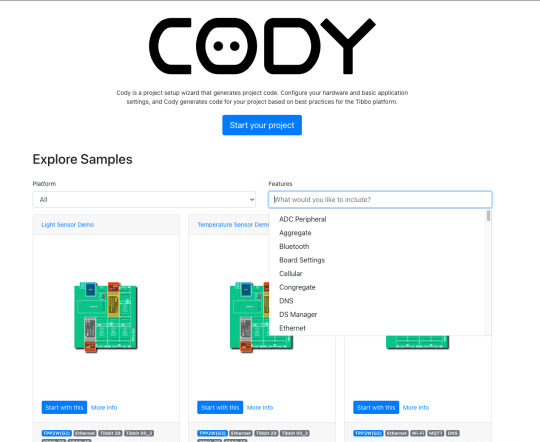
Samples contain application code in the form of App Blocks. You can modify a sample without writing any code — just use the App Blocks to change the flow of the program. Understanding what code is generated for a specific block is as easy as opening up the block and inspecting the code.
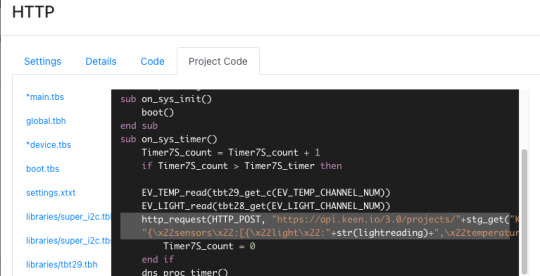
Data that is passed between nodes is automatically converted to the correct type. No more looking up what is the correct way to convert between different types!
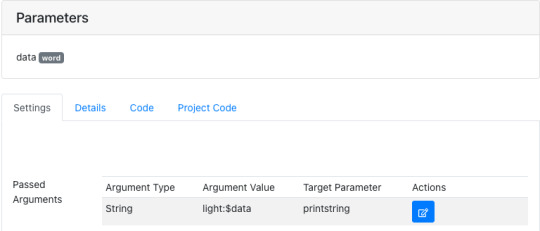
WebTIDE Integration
CODY — and by extension App Blocks — is fully integrated into WebTIDE, the web-based version of the venerable Tibbo Integrated Development Environment (TIDE). This means that App Blocks can be accessed directly from within WebTIDE to configure the application's logic, update the code, and debug devices.

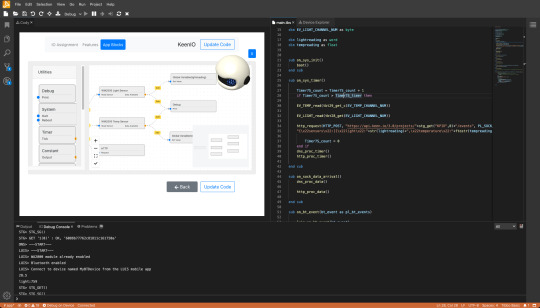
Committed to Development
We are constantly adding new App Blocks to CODY, including Tibbits, cloud features, and other high-level functionality. Have a block that you would like added? Let us know!.
Try CODY App Blocks now!
#Tibbo#Tibbo Technology#CODY#App Blocks#low code#programming#WebTIDE#Tibbo BASIC#programmable hardware#internet of things#IoT#industrial automation
1 note
·
View note
Link
The folks at @JettyProject weigh in on the issues effecting them regarding renaming Jetty from javax.* to jakarta.* https://t.co/d1AjRbFS99 #JakartaEE #Java pic.twitter.com/ZaYKLJPpzd
— Payara (@Payara_Fish) June 24, 2019
http://twitter.com/Payara_Fish/status/1143128281287450624
0 notes
Text
Introducing the WM2000EV Evaluation Kit and Ubuntu-Derived Linux Distribution for Tibbo Project System
Folks,
We are proud to make these two important announcements:
WM2000EV Evaluation Kit for the WM2000 Wireless IoT Module
Ubuntu-derived distribution for our LTPP3(G2) board WM2000EV Evaluation Kit
WM2000EV Evaluation Kit
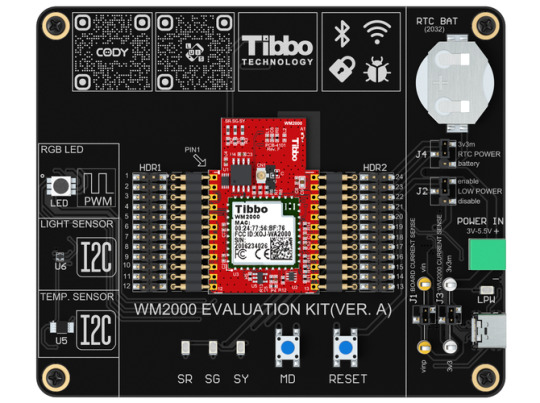
The newly released WM2000EV is an elegant kit for evaluating the capabilities of the WM2000, Tibbo's programmable Wi-Fi/BLE module.
The kit was designed to be completely self-contained and enable the exploration of the module's features without having to wire in any external circuitry. To this end, the board comes equipped with all essential buttons and status LEDs, temperature and light sensors, as well as a PWM-controlled RGB LED. The included CR2032 battery (installed in a holder) can be used to test out the WM2000's low-power "sleep" mode, in which the RTC continues operating and can wake the module up at a preset time.
To aid you in learning about the WM2000's features and capabilities, we have prepared a tutorial featuring a variety of projects.
Your journey begins with testing the IoT/sensor application that comes preloaded on the kit's WM2000. Follow the accompanying step-by-step guide, and in as little as 10 minutes you will have the WM2000 connected to and reporting the measured temperatures and light levels to the Keen service.
The second chapter teaches you how to wirelessly upload a different application into the WM2000. This application showcases controlling the board's RGB LED from a modern, non-reloading web page. In this step, you will also learn about the module's ability to store two applications at once.
Further steps will explain wireless debugging, using CODY (our project code generator), debugging code wirelessly, connecting to Microsoft's Azure cloud service, as well as using the WM2000 in BLE-enabled access control applications.
The kit is powered via an included USB-C cable, which can also be used as a wired debugging interface accessible from our TIDE and WebTIDE software. To facilitate debugging, the board's USB port is connected to the serial debugging pins of the WM2000 via a USB-to-serial converter IC. Wired debugging is useful when wireless debugging via Wi-Fi is unavailable or inconvenient.
Two pin headers are provided for easy access to the WM2000's pins. The module itself is held in place by spring-loaded pins and can be easily popped out and back in. The board even features jumpers and test points for measuring the current consumption of the board and the module.
Order Samples Now!
Ubuntu-based Distribution for the LTPP3(G2) Board

To facilitate the rapid development and deployment of Tibbo Project System (TPS)-based automation and IoT applications while offering our users a familiar environment, we have created an Ubuntu-based Linux distribution.
Ubuntu is one of the world's most popular flavors of Linux. It runs on all kinds of platforms and architectures, and there is a massive amount of community resources available for all project types.
Tibbo's Ubuntu-derived distribution is ideal for system integration, one-off projects, low-volume applications, educational props, and rapid prototyping of products, as well as experimentation and exploration. It provides a user experience similar to that of single-board computers such as Raspberry Pi, but on an extendable hardware foundation that was purpose-built for IoT and automation projects.
Those familiar with Ubuntu will find themselves at home on this new distribution offered by Tibbo. For example, there is a Personal Package Archive (PPA) that is accessible directly through the standard package management utility, apt-get. The PPA contains several tools to help you get started with our Ubuntu-based distribution on the LTPP3(G2) as quickly and effortlessly as possible.
The LTPP3(G2) is a member of the TPS family. A popular choice for automation and IoT projects, our TPS lineup includes the mainboards, I/O modules called Tibbits, and attractive enclosures. The LTPP3(G2) is a Linux mainboard designed around our advanced Plus1 chip.
Included in the PPA, the Out-of-Box Experience (OOBE) script simplifies the device's configuration with a series of interactive prompts that guide you through the process of setting up Wi-Fi/Bluetooth connectivity and the board's Ethernet ports for pass-through or dual-port operation.
Despite its young age, our Ubuntu-based distribution is already hard at work at our manufacturing facility in Taipei. For example, we use LTPP3(G2) boards for testing Tibbits during their production. Employing two high-definition cameras and a touchscreen, this system serves as the testbed for different Tibbits. Thanks to the power of the Plus1's pin multiplexing (PinMux), the individual I/O lines of the board can be remapped on the fly to cater to the needs of whichever Tibbit is being tested at the moment — no kernel rebuild or reboot required. On this new distribution, the board's GPIO lines are reconfigurable in code, much like they are in a typical Tibbo BASIC application.
While this effort remains a work in progress, the development of our Ubuntu-based distribution has reached a point where we feel comfortable sharing a working build with you. We have prepared a repository that contains not only the latest working image, but also automation scripts for customizing your builds through Docker.
We invite you to join us in exploring the exciting opportunities opened up by this new distribution. As always, we welcome your feedback to help us deliver useful solutions tailored to your needs.
Visit the LTPP3(G2) Page!
#Tibbo#IoT#IIoT#industrial automation#Industry 4.0#Tibbits#TIDE#WebTIDE#IDE#Linux#Ubuntu#Evaluation Kit#WM2000#LTPP3(G2)
0 notes
Text
A Trio of New Tibbits Offer Enhanced Options For Measurement, Connectivity, and Power.
Plus, Meet WebTIDE!
Folks,
Here at Tibbo, we remain hard at work creating the solutions that make your IoT and automation projects come to life. In recent weeks, we've released not one, not two, but three Tibbits that significantly enhance the capabilities of our Tibbo Project System (TPS) devices.
In addition, we're pulling back the curtain on a new project that will revolutionize your Tibbo BASIC development workflow and experience. Read on to learn more!
Tibbit #43-1 Four-Channel Streaming ADC
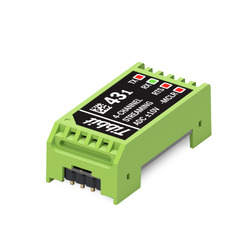
The new ADC Tibbit #43-1 has a built-in microcontroller and can output a steady stream of low-jitter measurements via the UART interface. Streaming solves a common data acquisition pain point: getting the main CPU to perform ADC conversions at precisely spaced time intervals. Achieving this is usually very hard. Employing a Tibbit that makes all the measurements on its own and just streams them into the system gets the job done.
Using serial port communications also simplifies the Tibbit's interfacing with our LTPP3(G2) Linux board. While Linux is not known for the fast or convenient handling of I²C or SPI comms, it is perfectly capable in the serial port department. It is really easy to write an app that picks the incoming data from the serial port's buffer, and the buffer size is usually large enough to keep accumulating the incoming data stream while the system is tied up elsewhere.
Tibbit #43-1 can function in single-ended or differential mode. In the single-ended mode, it offers four input channels with a ±10V input range. In the differential mode, there are two channels with a ±20V range. The Tibbit performs up to 1,000 ADC conversions per second while achieving an effective resolution of 10 bits + sign.
Each device is shipped pre-calibrated to minimize the linearity error and zero offset. The calibration parameters are stored in the onboard EEPROM. In operation, the Tibbit's microcontroller performs on-the-fly data corrections based on the stored calibration data.
The Tibbit's onboard microcontroller implements a simple command-and-reply interface for configuring the device's operating mode (single-ended or differential), active channels, sampling rate, and other parameters. There is also a command for performing single conversions, which allows using the Tibbit in a non-streaming, polled mode as well.
Last but not least, #43-1 generates all additional voltages on board and does not require Tibbit #12 (±15V power source), as was the case with our original ADC Tibbit #13.
Order Samples Now!
Tibbit #46 Cat-M1/NB-IoT Modem
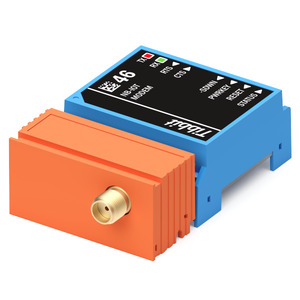
Many IoT and industrial automation projects require cellular communications as the only, main, or backup way of maintaining the cloud connection.
Our new Tibbit #46 provides Cat-M1 and NB-IoT connectivity for your TPS-based systems. NB-IoT is an excellent choice for the cost-effective transmission of small amounts of data from stationary IoT devices. While possessing a very limited bandwidth, NB-IoT networks typically offer superior signal penetration and, hence, better coverage. Applications that cannot be stationary can rely on Cat-M1, which supports roaming between cellular towers.
A dedicated library unlocks the full capabilities of Tibbit #46, allowing you to automate the process of initializing the modem, as well as automatically establishing and maintaining a PPP connection. The library also offers an AT command mode for "manual" modem control. You can easily include the library into your project through CODY, our project code wizard.
Order Samples Now!
Tibbit #33 Wide Input Range Industrial-Grade Power Supply
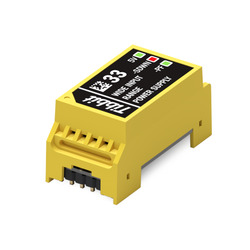
As some of you may know, Tibbo is active in the OEM market for industrial and automotive products. For years, we've been perfecting the craft of making highly reliable, rugged devices designed to work in some of the most unusual and challenging environments on Earth — aluminum smelter plant, anyone?
One of the crucial components of any tough industrial-grade product is, of course, its power regulator. We have invested years into choosing the right power supply circuitry. A lot of that unique experience we garnered along the way has now been distilled into the new power supply Tibbit #33.
This new Tibbit provides up to 1.5A of current from input voltages as low as 8V and as high as 60V, and in the entire industrial temperature range from –40°C to +85°C. The module's ability to handle voltage dips down to 6V and spikes up to 100V makes it suitable for battery-powered and automotive applications.
A single Tibbit #33 will be sufficient for most TPS configurations. Several Tibbits can be paralleled to increase the available current budget, for power redundancy, or load sharing. The -SHDN (shutdown) control line provides a way to shut down individual Tibbits #33, while the -PF (power fail) line allows detecting input power problems.
To achieve the best performance in high-temperature conditions, even the Tibbit's plastic shell has been revised to use a new high melting point mix!
Order Samples Now!
Announcing WebTIDE, Our Cross-Platform Development Solution

From its inception 20 years ago, Tibbo's mission has always been to provide hardware and software solutions that simplify and speed up the creation of IoT and industrial automation devices. In continuing this quest, we are once again focusing on Tibbo IDE (TIDE) — our development tool supporting all our programmable products.
The reason is simple: The world has moved beyond its reliance on Windows, and TIDE has remained in the "single-OS jail." Sure, it was possible to run it on Linux through Wine, but the experience wasn't perfect. Plus, this still left out many other platforms and device form factors.
Enter WebTIDE — our in-browser, cross-platform solution that works on Windows, Linux, and macOS, as well as iOS*, Android*, and Chrome OS*. WebTIDE runs in Chrome, Safari, Edge, and other popular browsers, achieving true multi-platform portability.
Unlike its desktop counterpart, WebTIDE is tightly integrated with CODY, our handy online project code generator. Create a project in CODY and hand it off to WebTIDE for further development. Want to change your project's configuration? To save time, make the changes in CODY, and they will propagate into and merge with the code you've been editing in WebTIDE.
A marquee feature of WebTIDE is the one many of our users have dreamed of, and it is arriving just in time for this socially distanced era: the ability to debug Tibbo BASIC code running on Tibbo devices installed on remote networks. For code debugging, WebTIDE relies on a separate debugging extension app. This extension can be deployed almost anywhere, even on a system connected to another network — thus enabling the remote debugging of your apps.
Please note that WebTIDE is still in early beta, and we are continuing to work on porting and implementing many vital features. However, nearly all of the main functionality is already present. Join the growing ranks of WebTIDE users and be sure to tell us if you find a bug or want a specific feature or change — absolutely all feedback is welcome!
* With the debugging extension deployed elsewhere.
Try It Now!
0 notes